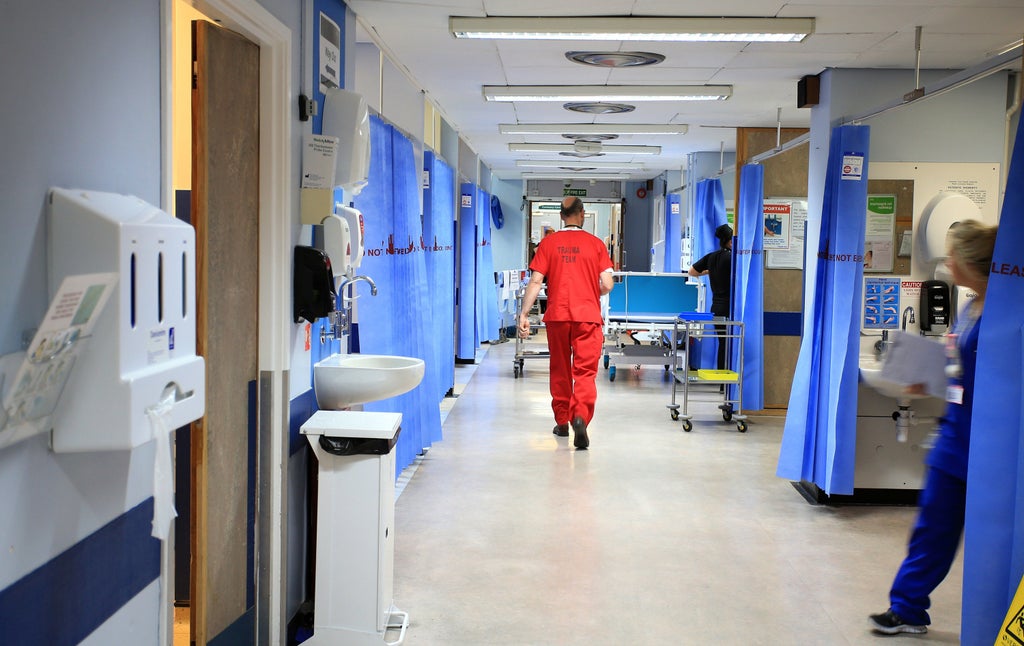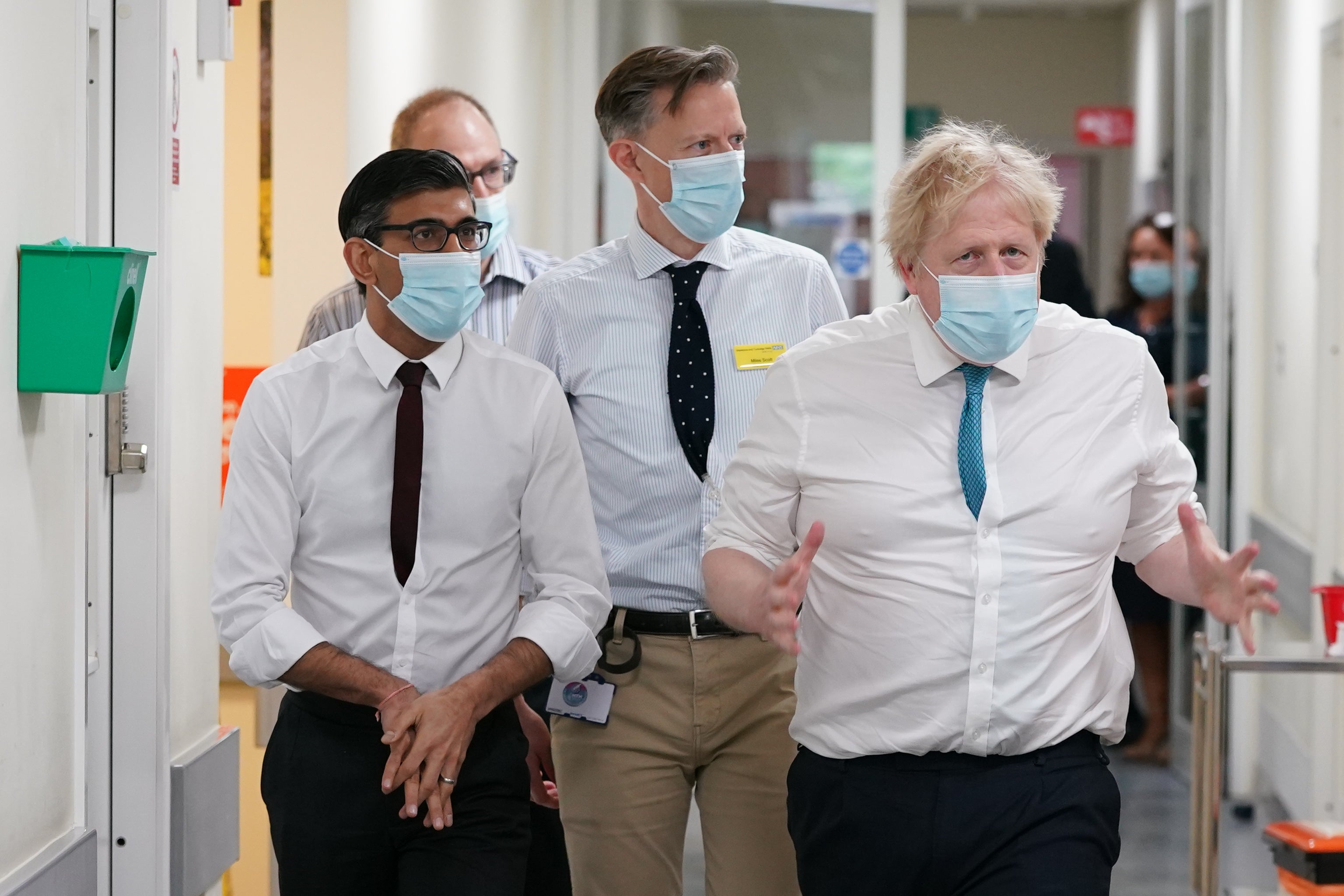
The NHS waiting list in England will not start to fall for at least another two years and could even double in size, according to the Government’s new recovery plan.
Health Secretary Sajid Javid set out in the Commons how the NHS would tackle the backlog of care built up during the Covid-19 pandemic, including new targets for reducing long waits and getting people checked for illnesses more quickly.
Among the ambitions are:
– The NHS will “eliminate” waits of over 18 months by April 2023, and waits over 65 weeks by March 2024.
– Waits of longer than a year will end by March 2025.
– No-one will wait longer than two years for treatment by this July.
– Some 95% of patients needing a diagnostic test will receive it within six weeks by March 2025. This target already exists but is not being met.
– By March 2024, 75% of patients who have been urgently referred by their GP for suspected cancer will be diagnosed or have cancer ruled out within 28 days.
– By March next year, people should wait no more than 62 days between an urgent referral for suspected cancer and the start of treatment. This target already exists but is not being met.
Around six million people in England are on the NHS waiting list for treatment, including hip and knee replacements, cataract surgery and tests.
According to the plan, if all 10 million people estimated to have stayed away during the pandemic came forward for treatment, and activity was not increased above pre-pandemic levels, the waiting list could hit 14 million.
Mr Javid said: “Assuming half of the missing demand from the pandemic returns over the next three years, the NHS expect waiting lists to be reducing by March 2024.

“Addressing long waits is critical to the recovery of elective care and we will be actively offering longer waiting patients greater choice about their care to help bring these numbers down.”
The plan will focus on “four areas of delivery”, including increasing health service capacity together with the independent sector; prioritising diagnosis and treatment; reforming care such as making outpatient appointments more focused on “clinical risk and need”, and increasing activity through dedicated and protected surgical hubs.
The plan also sets out how patients will be helped to make use of the NHS App to better manage appointments, bookings and the sharing of information.
As previously announced, some nine million additional treatments and diagnostic procedures will be brought in by 2025, while the admin burden on staff will be cut.
NHS England said this will mean that over a three-year period, patients will be offered around 17 million more diagnostic tests – an increase in capacity of a quarter compared with the three years prior to the pandemic.
The plan further promises to create dozens more community and NHS-based sites for surgical procedures and “convenient, quick diagnostic checks, towards our ambition of a network of surgical hubs and diagnostic centres covering the entire country”.
This is in addition to the network of 122 surgical hubs already operating.
Teams of specialists will be deployed to help patients prepare for their operations, and groups of clinicians and teams will be able to get instant access to test results, offering patients faster clinical advice.
Prime Minister Boris Johnson said: “The NHS is there for us all in our time of need, but the pandemic has put unprecedented strain on health workers and patients alike.
“Today we have launched the biggest catch-up programme in the history of the health service backed by unprecedented funding.
“These measures will make sure patients receive the right care, in the right place at the right time as we bust the Covid backlogs and recover from the pandemic.”
As we move out of the Omicron wave, the NHS is applying the same determination and ‘can do’ spirit we have displayed throughout the pandemic
NHS chief executive Amanda Pritchard said: “As we move out of the Omicron wave, the NHS is applying the same determination and ‘can do’ spirit we have displayed throughout the pandemic to address backlogs in routine care that have inevitably built up, and reduce long waits.
“That cannot happen overnight but we are determined to make the best possible use of the additional investment and take the best from our pandemic response, including smarter use of digital care and flexible working between teams and trusts, while building this additional diagnostic capacity that will help to accelerate progress.”
Professor Helen Stokes-Lampard, chairwoman of the Academy of Medical Royal Colleges, said: “With the NHS under so much pressure, it’s absolutely right that we take steps to ensure patients are able to get the treatment they need.
“This plan very clearly sets out what we need to do in the months and years ahead and, although it may seem radical in parts, is nevertheless essential if we are to reduce the backlog in elective care and ensure that those who are most sick are prioritised.
“By setting out in clear terms what patients can expect from the NHS and how they in turn can help, I hope it will also take some of the pressure off our hard-pressed health and care staff who are facing the most extraordinary workload and stress day in, day out.”
Richard Murray, chief executive of The King’s Fund, said: “This is a welcome plan, but the NHS will need more staff to make it a reality.”
Matthew Taylor, chief executive of the NHS Confederation, welcomed the plan and added: “The NHS is working hard to prioritise patients with the greatest clinical need, including by carrying out 1.3m consultant-led treatments in a single month and we have seen some brilliant examples of innovation where data and technology have been used to both support patients and ramp up activity.”
Speaking in the Commons, Mr Javid said that despite the NHS’s “exceptional efforts”, there “is now a considerable Covid backlog of elective care”.
He said 1,600 people were waiting longer than a year for care before the pandemic but that figure is now over 300,000.







